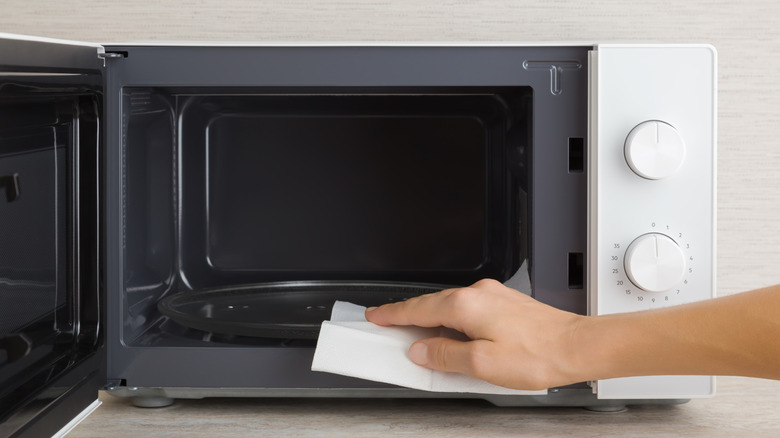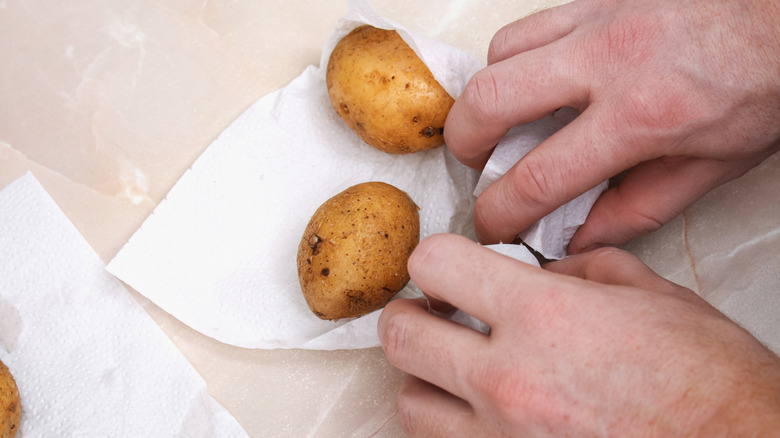Paper Towels Are Safe In The Microwave, But There's A Catch
Microwaves are an essential appliance for every kitchen, having come a long way since the idea was patented by inventor Percy Spencer in 1945 and became more common with technological advancements in the 1970s. Today, approximately 90% of homes in the U.S. have microwave ovens. They're a quick, easy way to reheat foods and prepare microwave-specific sides and TV dinners. However, you should stop using plastic or Tupperware in the microwave immediately. Styrofoam containers and untreated plastic wraps can leach chemicals like bisphenol A and phthalates into your food. Meanwhile, metal pans and aluminum foil reflect the microwaves, cooking food unevenly and even damaging your appliance. Wrapping your food in paper towels should be a safe alternative, as long as you avoid recycled or paper towels printed with patterns.
If products like brown paper bags, colored paper plates, paper towels, or napkins are overexposed to heat, especially when paired with fatty foods, they might catch fire. Recycled paper sometimes contains metal particulates, and colorful inks can leach chemicals similar to those found in plastic containers into food. However, plain white microwave-safe paper towels should be perfectly fine to wrap a sandwich or cover other microwaveable containers with. They promote more even heating and less splattering. It might take a little extra work to figure out if your mug is safe to microwave, but pairing it with the right kind of paper towel is a safe option.
Use the right paper towels for better microwave cooking
To take full advantage of this indispensable kitchen tool, choose a microwave manufactured by the most trustworthy and reliable appliance brands. You just want to be careful what you put in them, both to protect the appliance and your health. Paper towels are a safe option, as long as you're using the right kind — that is, plain white, food-grade paper towels — and using them correctly.
Dampen paper towels when using them to cover microwave-safe containers. The moisture makes it easier to cook food evenly and retains nutrients as the microwaves move around the cooking cavity. Another useful tip is to leave room between the paper towel lid and your food. This reduces the chance of anything leaching into your food, or, as mentioned, soaking up fat from the food and catching on fire. A loose-fitting lid also stops pressure from building inside the microwave and vents steam from the container.
Just as you should avoid recycled paper, which may contain flammable waste products, the containers you use in your microwave should not have any metal parts. Even thin metal rims on bowls pose a problem. Glass or ceramic containers are your best bet, though you can also heat bread in wood or straw baskets for a short time. Line the inside with a plain white paper towel to absorb any moisture.

